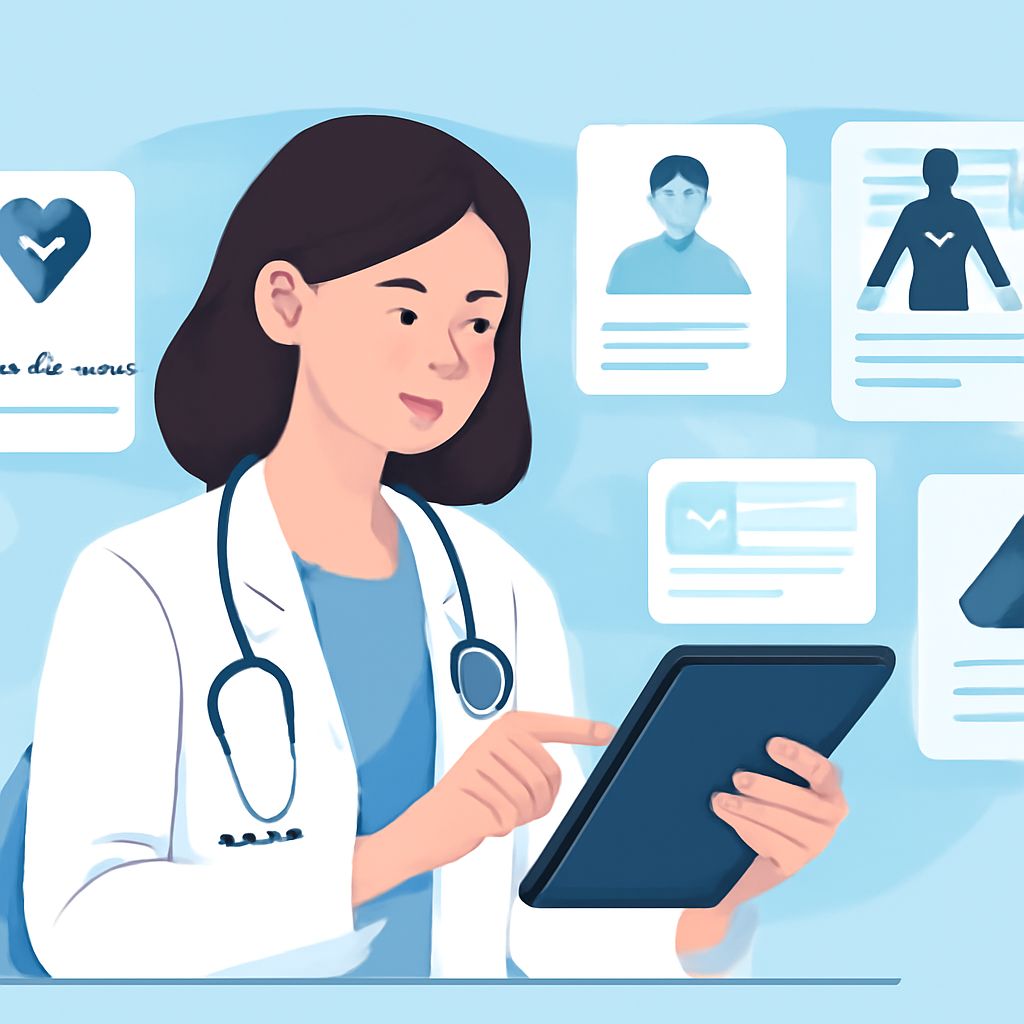Introduction
The rapid evolution of technology has significantly transformed various sectors, with healthcare being one of the most impacted. As medical apps become essential tools for both patients and healthcare providers, the importance of innovative user interface (UI) design strategies cannot be overstated. Effective UI design enhances user experience, increases patient engagement, and ultimately improves health outcomes. This article explores innovative UI design strategies tailored for medical applications that aim to bridge the gap between technology and healthcare.
The Importance of UI Design in Healthcare
UI design plays a crucial role in the usability of medical applications. A well-designed interface can simplify complex medical information, making it accessible to users with varying tech-savviness. Here are some key reasons why UI design is critical in healthcare:
- User Engagement: Intuitive designs encourage users to interact with apps regularly, promoting adherence to health management plans.
- Information Clarity: A clear layout helps users understand their health data, reducing confusion and improving decision-making.
- Accessibility: Inclusive design ensures that apps cater to users with disabilities, ensuring equal access to healthcare resources.
- Efficiency: Streamlined interfaces can save time for both patients and healthcare professionals, enhancing overall productivity.
Key Strategies for Designing Medical Applications
Creating an effective UI for medical apps involves a thoughtful approach to design principles. Here are several innovative strategies to consider:
1. User-Centered Design
Incorporating user feedback into the design process is vital. User-centered design ensures that the app meets the needs and preferences of its target audience. This approach can be implemented through:
- Surveys and Interviews: Gather insights from potential users to understand their expectations and pain points.
- Usability Testing: Conduct testing sessions to observe how real users interact with the app and identify areas for improvement.
- Iterative Design: Employ iterative cycles of design, testing, and modification to refine the app continuously.
2. Simplified Navigation
A clear and straightforward navigation system is essential in medical applications. Consider the following:
- Intuitive Menus: Organize information logically to facilitate easy access to features.
- Search Functionality: Implement robust search functions to help users find information quickly.
- Consistent Layout: Maintain consistency in design elements to avoid confusion and create a sense of familiarity.
3. Visual Design Elements
The visual appeal of an application can significantly impact user engagement. Effective use of colors, typography, and graphics can enhance usability:
- Color Psychology: Use colors that evoke trust and calmness, such as blues and greens, to create a professional look.
- Typography: Choose clear and readable fonts, ensuring that text is legible on various devices.
- Iconography: Implement recognizable icons to convey actions or information efficiently.
4. Personalization and Customization
Allowing users to customize their experience can lead to higher satisfaction. Consider features such as:
- Dashboard Personalization: Enable users to modify their dashboards to display the most relevant health metrics.
- Notification Settings: Give users control over alert frequencies for medication reminders or health tips.
- Theme Options: Offer light and dark modes to cater to user preferences and enhance usability in different lighting conditions.
5. Integration of Telehealth Features
With the rise of remote healthcare, integrating telehealth functionalities into medical apps is essential. This can include:
- Video Consultations: Enable patients to schedule and conduct virtual appointments with healthcare providers.
- Messaging Systems: Implement secure messaging features for patients and providers to communicate easily.
- Record Keeping: Allow users to store and share medical records digitally for seamless consultation.
Challenges in Medical App UI Design
While developing medical applications, designers often face unique challenges:
- Complex Regulations: The healthcare industry is heavily regulated, requiring compliance with various laws and standards.
- Data Security Concerns: Ensuring the privacy and security of sensitive patient data is paramount.
- Diverse User Base: Designing for users with varying levels of technological proficiency can complicate the design process.
Case Studies: Successful Medical Apps
Examining successful medical applications can provide invaluable insights into effective UI design strategies. Here are a few notable examples:
| Application | Key Features | UI Highlights |
|---|---|---|
| MyFitnessPal | Calorie tracking, exercise log | Simplified dashboard, engaging visuals |
| Medisafe | Medication management, reminders | User-friendly notifications, customizable features |
| HealthTap | Telehealth services, expert consultations | Intuitive navigation, clear communication tools |
Conclusion
The future of healthcare lies in the effective integration of technology, and innovative UI design is at the forefront of this transformation. By prioritizing user-centered design, simplifying navigation, and embracing personalization, developers can create medical applications that not only meet the needs of patients and providers but also enhance the overall quality of care. As we move forward, continuous research and adaptation to user feedback will ensure that healthcare technology evolves in a way that is both impactful and user-friendly.
FAQ
What are innovative UI design strategies for medical apps?
Innovative UI design strategies for medical apps include user-centered design, intuitive navigation, accessibility features, and incorporating feedback loops for continuous improvement.
How does UI design impact patient engagement in healthcare apps?
Effective UI design enhances patient engagement by making apps easy to use, visually appealing, and providing personalized experiences that encourage regular interaction.
What role does accessibility play in medical app design?
Accessibility in medical app design ensures that users with disabilities can easily navigate and use the app, which is crucial for inclusivity and compliance with regulations.
How can medical apps maintain user privacy while providing personalized experiences?
Medical apps can maintain user privacy by implementing robust data encryption, transparent privacy policies, and user-controlled data sharing options.
What are the key considerations for designing user interfaces for elderly patients?
Key considerations for designing UI for elderly patients include larger text sizes, high-contrast color schemes, simple navigation, and clear, concise instructions.
How can feedback from healthcare professionals improve medical app UI design?
Feedback from healthcare professionals can provide valuable insights into user needs and pain points, leading to a more effective and user-friendly app design.




